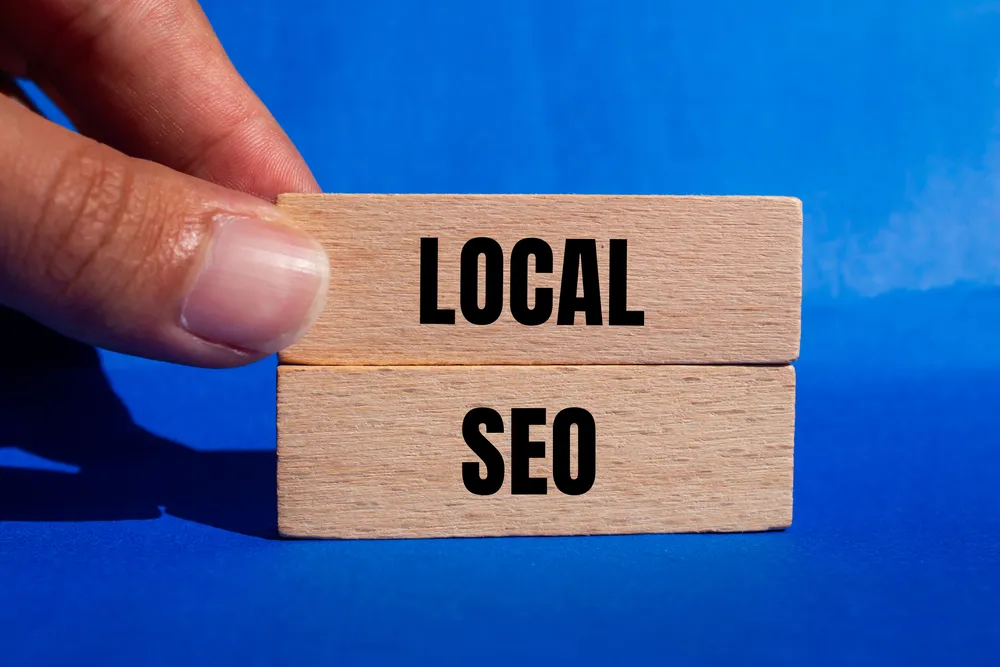The Ultimate Guide to Local SEO for Podiatrists: Get Found in Your City

In the contemporary digital environment, distinguishing oneself within the local market is essential, particularly for podiatrists seeking to attract new patients and improve their online reputation. This guide delineates the fundamentals of Local SEO, emphasizing its distinctions from traditional SEO and its critical importance for your practice, including insights from SEO experts. By optimizing your online presence through Google Business Profile, utilizing local directories, and developing engaging content, you can implement effective strategies to enhance your visibility and attract potential patients. Explore methods to improve your online reputation and monitor your success, ensuring that you are not only visible but also preferred by potential patients in your vicinity. This involves analyzing traffic trends and understanding user behaviour with tools like Google Analytics.
Key Takeaways:
- Optimize your website for local SEO by claiming and optimizing your Google Business Profile, using local keywords, and implementing schema markup to improve search visibility.
- Leverage local directories and local citations by submitting your business and ensuring consistency in your NAP. Get listed on healthcare and podiatry-specific directories for even more local visibility.
- Utilize local content marketing by creating location-specific content, collaborating with local businesses and organizations, and incorporating local keywords and engaging in community events to boost your local SEO presence.
What Is Local SEO?
Local SEO, or local search engine optimization, represents a specialized area of digital marketing dedicated to enhancing online visibility to attract more business from pertinent local searches, thereby facilitating lead generation and conversion rates.
This approach is particularly crucial for healthcare providers, including podiatry clinics, as it allows them to increase their visibility in search engine results when potential patients seek local foot care services, ensuring patient satisfaction and improved search engine rankings.
By employing targeted strategies, local SEO assists businesses in achieving higher rankings on search engine results pages (SERPs), thereby ensuring effective connection with their intended audience and aligning with user intent.
How Does Local SEO Differ From Traditional SEO?
Local SEO distinguishes itself from traditional SEO by concentrating on optimizing online presence specifically for local searches, a critical aspect for businesses such as podiatry clinics aiming to attract nearby patients and improve their overall online presence.
While traditional SEO seeks to enhance overall visibility in search engines, local SEO prioritizes local keywords, local search queries, and the use of local citations to facilitate potential patients in easily locating relevant foot care services in their area, thus optimizing local search visibility.
Recognizing this distinction is essential, as many individuals seeking foot care often enter queries that include specific geographic locations, such as “podiatrist near me” or “foot doctor in [city name].” This behavior indicates a strong intent to find services that are both accessible and immediate, highlighting the importance of precise keyword placement and content relevance.
Incorporating local citations where listings appear across various online directories can significantly enhance the credibility and authority of a podiatry clinic in local search results, thereby increasing engagement and traffic.
As search behaviors continue to evolve, leveraging the advantages of local optimization not only improves visibility but also drives increased foot traffic to these clinics, ultimately enhancing patient engagement and care through responsive design and website optimization.
Why Is Local SEO Important for Podiatrists?
Local SEO is of paramount importance for podiatrists, as it has a direct impact on patient satisfaction and online reputation. By implementing effective local SEO strategies, podiatry clinics can ensure a prominent presence in search engine results when potential patients seek foot care services in their vicinity, thus benefiting from increased conversion rates.
This increased visibility not only enhances the clinic’s profile but also aids healthcare providers in developing a favorable online presence, thereby facilitating the attraction and retention of clients and improving their backlink profile.
An optimized local online presence bolsters credibility and encourages positive reviews from satisfied patients, further reinforcing the trustworthiness of their services. As more individuals turn to the internet to locate healthcare providers, podiatrists can effectively leverage local SEO to establish a competitive advantage in their market, thereby driving increased foot traffic to their clinics and enhancing their overall SEO strategy.
The benefits of enhanced local visibility are evident; an influx of patients contributes to improved patient experiences, fostering a loyal customer base that can substantially augment a podiatrist’s practice over time, supported by strategic reviews management.
How to Optimize Your Website for Local SEO
Optimizing a website for local SEO is an essential undertaking for podiatry clinics seeking to improve their online visibility and attract a larger patient base, supported by thorough website audits.
Effective local SEO strategies encompass not only the optimization of the website for search engines but also the prioritization of user intent and the provision of a seamless experience for visitors, including attention to technical specifications and load times.
This includes ensuring that the website is mobile-friendly, fast-loading, and features authoritative content that resonates with the local audience, while also facilitating internal linking and content marketing.
1. Claim and Optimize Your Google My Business Listing
Claiming and optimizing your Google Business Profile is an essential initial step in establishing a robust online presence for your podiatry clinic. This optimization process enables you to provide critical information regarding your foot care services, including your location, operating hours, and contact details, which can significantly enhance your visibility in local search results. It is imperative to ensure the accuracy and completeness of your listing to effectively attract potential patients.
Following the establishment of your listing, it is important for podiatrists to consistently update the profile with photos, descriptions of services offered, and patient reviews. These elements contribute to building trust and credibility within the local community, enhancing engagement and foot health awareness.
The subsequent step involves verifying ownership of the listing through a formal verification process, which may include receiving a postcard from Google at the clinic’s physical address. Once ownership is verified, enhancing the listing with relevant local keywords and maintaining consistent local citations across various directories can improve search rankings and service area coverage.
These citations function as vital references, authenticating the business details and potentially enhancing local SEO. This increases the likelihood that individuals searching for foot care services will select your clinic over competitors.
2. Include Local Keywords in Your Website Content
Incorporating local keywords into the website content is essential for enhancing the search engine rankings of a podiatry clinic and attracting targeted traffic. By strategically placing relevant local keywords related to foot care services throughout the website, practitioners can improve their chances of appearing in search queries used by potential patients seeking podiatrists in their vicinity. This practice not only optimizes content marketing efforts but also aligns with the intent of users behind their searches, supporting effective keyword research.
To effectively identify these local keywords, podiatrists may utilize tools such as Google Keyword Planner or SEMrush to discover terms that include geographical locations, such as “podiatrist in [City]” or “foot care services near me.” Furthermore, it is beneficial to consider keywords that address specific foot-related issues pertinent to the local population, such as “diabetic foot care [City]” or “sports injuries treatment [Neighborhood].”
By incorporating these phrases seamlessly within service pages, blog posts, and metadata, practitioners can significantly enhance their visibility among prospective patients searching for their expertise within the community, thereby boosting local market engagement.
3. Optimize Your Title Tags and Meta Descriptions
Optimizing title tags and meta descriptions is a fundamental component of website optimization that can significantly influence a podiatry clinic’s search engine rankings. These elements are crucial for conveying pertinent information to search engines and potential patients, which in turn enhances click-through rates from search results.
Developing compelling and keyword-rich title tags and meta descriptions ensures that the content aligns with user behavior and search queries within the foot care sector, aiding in ranking high for relevant terms.
In the current competitive digital landscape, effective title tags should accurately reflect the specific services provided by the clinic, such as “diabetic foot care” or “bunions treatment,” ensuring medical SEO standards are met. Likewise, meta descriptions must not only incorporate relevant keywords but also present a concise yet informative summary that encourages users to visit the website.
It is also advantageous to monitor local SEO factors; the inclusion of geographical keywords can attract nearby patients who are searching for foot care solutions, improving search visibility. Regularly updating these elements and ensuring they align with the clinic’s offerings and local market trends can significantly enhance visibility and engagement, supporting an effective digital marketing strategy.
4. Use Schema Markup to Improve Local Search Visibility
Utilizing schema markup is an advanced technical SEO strategy that can significantly enhance the local search visibility of a podiatry clinic, reinforcing its authoritative content. By implementing structured data on the website, search engines are better equipped to comprehend the content and its context, resulting in improved visibility in search results and higher engagement from the targeted audience.
This practice not only enhances the online reputation of the clinic but also provides potential patients with pertinent information about services directly within search snippets, improving patient satisfaction.
The application of schema markup can lead to increased click-through rates, as searchers are often attracted to rich snippets showcasing ratings, reviews, and operational details actors that are critical when patients make decisions regarding their healthcare needs, highlighting the importance of reviews management.
To implement this strategy effectively, it is essential to utilize specific schema types, such as LocalBusiness or MedicalOrganization, ensuring that the clinic’s name, address, phone number, and services are accurately structured.
Consequently, local search rankings may improve, enabling the clinic to attract more targeted traffic, which ultimately results in an increase in patient appointments.
5. Optimize Your Website for Mobile
Optimizing a website for mobile is essential in the current digital landscape, particularly for podiatry clinics aiming to attract local patients. A mobile-friendly website significantly enhances user experience, allowing potential patients to navigate through services with ease while on-the-go.
Search engines, such as Google, prioritize mobile-friendly sites in their rankings; thus, neglecting this aspect can adversely impact local SEO efforts and search visibility.
Responsive design is crucial in determining how users interact with the website across various devices, including smartphones and tablets. To improve loading times, it is important to compress images and employ efficient coding techniques.
Moreover, ensuring that vital information, such as contact details and appointment scheduling, is readily accessible can greatly enhance overall user experience.
Podiatry clinics should also consider incorporating features such as quick call buttons and location maps to facilitate seamless communication and navigation for their patients. Implementing these strategies not only improves usability but also fosters trust and encourages engagement within the local community.
6. Encourage Online Reviews from Local Customers
Encouraging online reviews from local customers is an effective strategy to enhance the online reputation of a podiatry clinic and attract a greater number of potential patients. Positive patient reviews not only strengthen the clinic’s credibility but also contribute to local SEO efforts by signaling to search engines that the clinic is a trusted provider of foot care services. Engaging with both positive and negative reviews can enhance patient satisfaction and demonstrate a commitment to quality care.
To effectively manage and encourage these reviews, clinics can implement several strategies:
- Actively requesting feedback after appointments through email follow-ups or text messages can prompt satisfied patients to share their experiences.
- Creating a seamless review process on platforms such as Google and Yelp can facilitate participation.
When responding to feedback, it is essential to personalize replies and address concerns publicly to demonstrate transparency and responsiveness. This approach not only strengthens relationships with current patients but also establishes a positive image for prospective patients who are researching available services.
How to Leverage Local Directories and Citations
Utilizing local directories and citations represents a strategic methodology for enhancing the online presence and local SEO initiatives of a podiatry clinic. By ensuring that information is accurate and consistently presented across various local directories, the clinic can improve its credibility and facilitate easier access for potential patients seeking its services.
This practice not only enhances visibility in local search results but also reinforces the clinic’s reputation among healthcare providers within the community.
1. Submit Your Business to Local Directories
Submitting your podiatry clinic to local directories is a crucial step in establishing a robust online presence and enhancing local search engine optimization (SEO).
By listing your practice on relevant platforms, you increase the likelihood of being discovered by potential patients seeking foot care services in your vicinity. This not only improves visibility but also contributes to the formation of valuable local citations that can elevate your search engine rankings.
To initiate this process, it is important to identify reputable local directories that specialize in healthcare services, such as Yelp or Healthgrades, and to create a comprehensive and engaging profile. Ensure that you include essential information such as your clinic’s address, phone number, and operating hours for accuracy.
By maintaining consistency across these platforms, foot care professionals can build trust with both search engines and potential patients. Each submission serves as a citation, signaling to search engines that your clinic is a credible authority in the field of podiatry.
As these citations accumulate, they can significantly enhance local search rankings, facilitating easier access for patients in need of foot care services to find and select your offerings.
2. Ensure Consistency in Your NAP (Name, Address, Phone Number)
Ensuring consistency in your NAP (Name, Address, Phone Number) across all online platforms is essential for your podiatry clinic’s local SEO and online reputation. Inconsistent information can confuse potential patients and may adversely affect your search engine rankings.
By maintaining uniformity in your NAP details, you enhance the credibility of your clinic and increase your likelihood of appearing prominently in local search results.
Discrepancies in your clinic’s contact information can lead to missed opportunities, as patients may choose competitors that provide clear and accurate information.
To ensure NAP consistency, begin by conducting an audit of your existing listings on key directories such as Google My Business, Yelp, and Healthgrades. Update any inaccurate information and establish a standardized format for your NAP.
Regularly monitor your digital presence and consider utilizing citation management tools to streamline this process. By implementing these proactive measures, your clinic can secure a robust online presence that not only attracts new patients but also fosters trust within your community.
3. Get Listed on Healthcare and Podiatry-Specific Directories
Listing your clinic in healthcare and podiatry-specific directories can significantly enhance its visibility and credibility within the local community. These specialized directories not only connect potential patients with relevant foot care services but also improve local citations, which further bolsters local SEO.
Being present in locations where patients expect to find healthcare providers can have a substantial impact on how your clinic is perceived in the local market.
For podiatrists, utilizing directories such as Healthgrades, Zocdoc, and local-specific platforms like Vitals can further extend their reach. By being included in these niche-specific directories, podiatrists can showcase their expertise in foot care and accumulate valuable testimonials from patients, which fosters trust.
This approach not only drives increased traffic to their websites but also establishes a strong reputation within the community.
By actively engaging with these platforms, podiatrists can ensure that they present a consistent and appealing image to potential clients searching for quality foot care solutions in their vicinity.
How to Use Local Content Marketing to Boost Your Local SEO
Local content marketing serves as an effective strategy for enhancing the local SEO of a podiatry clinic, as it engages potential patients and establishes the clinic’s expertise in foot health.
By developing relevant and valuable blog posts and articles tailored to the local community, the clinic can attract traffic to its website while simultaneously improving its online reputation.
This approach ensures alignment of the content with user intent, effectively addressing the specific concerns and interests of the target audience.
1. Create Location-Specific Content
Developing location-specific content represents a strategic approach to engage with the local audience and improve the SEO performance of your podiatry clinic. By customizing your content to meet the specific needs and interests of patients within your service area, you can effectively address local foot care concerns, highlight community events, and fortify your online presence.
This focused content not only attracts potential patients but also reinforces your authority within the local podiatry market.
To create compelling content, consider addressing common foot issues that are prevalent in your area, which may be influenced by local sports activities or climatic conditions. Sharing success stories of patients, offering localized foot health advice, or including testimonials from community members can resonate well with residents.
Incorporating relevant local keywords will enhance the discoverability of your content for individuals searching for podiatry services in proximity to your clinic, thereby improving your clinics visibility.
From blog posts offering seasonal foot care tips to social media updates about local health fairs, there are numerous opportunities to foster a connection with the community while establishing your practice as a trusted resource.
2. Collaborate with Local Businesses and Organizations
Collaborating with local businesses and organizations presents a significant opportunity to enhance the visibility of a podiatry clinic and foster community engagement. By actively participating in community events and forming strategic partnerships with other healthcare providers or local services, one can establish valuable relationships that contribute to an improved online reputation and local search engine optimization (SEO).
Such collaborations are conducive to mutual referrals and heightened patient satisfaction, as they address a broader spectrum of community needs.
For example, partnering with local gyms or sports teams can create avenues for workshops focused on foot health. These initiatives not only demonstrate expertise but also cultivate connections with potential patients. Additionally, collaborating with complementary healthcare practices, such as physiotherapy clinics or chiropractors, can enhance the overall spectrum of health services available to patients.
These joint marketing efforts not only expand reach but also improve local search rankings through the establishment of backlinks and the sharing of content, thereby increasing the clinic’s visibility to individuals seeking podiatric care.
Furthermore, active participation in community initiatives reinforces credibility and positions the clinic as an essential component of local health and wellness.
3. Utilize Local Keywords in Your Content
Utilizing local keywords in content is essential for enhancing its relevance and efficacy in attracting potential patients to a podiatry clinic. By seamlessly integrating these keywords into articles, blog posts, and web pages, one ensures that the content aligns with the search queries and interests of the local audience. This strategic approach not only improves search engine optimization (SEO) but also establishes the clinic’s expertise in significant foot health topics.
To achieve optimal results, it is critical to employ a combination of short-tail and long-tail local keywords that reflect regional trends and common issues faced by residents. For example, referencing specific local landmarks, communities, or prevalent foot conditions can resonate more effectively with the audience.
Maintaining content relevance is paramount; emphasis should be placed on creating high-quality, informative materials that provide value to readers, rather than solely focusing on keyword insertion. It is important to remember that content that appears forced or lacks coherence may result in a negative user experience and could lead to potential penalties from search engines for keyword stuffing.
The Importance of Online Reputation Management for Local SEO
Online reputation management is an essential aspect of local SEO for podiatry clinics, as it has a direct impact on patient perceptions and the overall success of the practice.
Effectively managing patient reviews enables clinics to address concerns, highlight patient satisfaction, and foster trust within the community.
By actively engaging with customers and developing a positive online reputation, podiatry clinics can enhance their visibility and credibility in local search results.
1. Monitor and Respond to Online Reviews
Monitoring and responding to online reviews is crucial for maintaining a positive online reputation for a podiatry clinic. By actively engaging with patient feedback, the clinic not only expresses gratitude for positive reviews but also demonstrates a commitment to addressing any concerns raised by dissatisfied patients. This practice enhances patient satisfaction and fosters trust, ultimately contributing to improved local SEO rankings.
Prompt responses to reviews convey to potential patients that their opinions are valued and that the clinic prioritizes their experiences. Establishing a structured approach for monitoring reviews whether through website alerts or dedicated platforms can facilitate this process. Ideally, responses should be timely, professional, and tailored to reflect the clinic’s values.
For example, a thoughtful acknowledgment of a positive review paired with a constructive response to negative feedback can highlight the clinics dedication to continuous improvement. This level of engagement not only elevates the clinic’s online presence but also encourages more patients to share their experiences.
2. Address Negative Reviews Promptly and Professionally
Addressing negative reviews promptly and professionally is essential for safeguarding the online reputation of a podiatry clinic and maintaining patient trust. By acknowledging and responding constructively to concerns, clinic administrators can demonstrate their commitment to quality care and patient satisfaction.
This proactive approach not only assists in resolving issues but also enhances the clinic’s image when potential patients read the responses.
Effectively handling negative feedback can lead to improved customer relationships and encourage satisfied patients to share their positive experiences. It is vital to remain calm and empathetic, recognizing that each review presents an opportunity to enhance service quality.
Responding in a respectful and timely manner not only showcases professionalism but can significantly influence public perception.
Over time, this strategy mitigates reputational damage and strengthens local SEO, as search engines favor businesses that engage with their audience and address concerns. Ultimately, this approach can attract more patients to the clinic.
Tracking and Measuring Your Local SEO Success
Tracking and measuring local SEO success is essential for evaluating the effectiveness of strategies and making informed enhancements for your podiatry clinic.
By utilizing tools such as Google Analytics and conducting comprehensive website audits, one can assess key performance indicators, including search visibility, traffic trends, and patient engagement.
This data-driven approach enables the refinement of local SEO strategies and the enhancement of online presence, ultimately leading to better service for the community.
1. Monitor Your Local Search Rankings
Monitoring local search rankings is crucial for evaluating the effectiveness of a podiatry clinic’s SEO strategy. By tracking the website’s performance for targeted local keywords, one can identify areas for improvement and adjust tactics to enhance visibility in search results.
Regular assessment of rankings facilitates the measurement of progress and enables data-informed decisions that can lead to improved patient engagement.
Utilizing tools such as Google My Business Insights, SEMrush, or Moz can provide valuable data regarding local search visibility. These tools offer insights into keyword performance and local competition, allowing for effective interpretation of the results.
By analyzing the provided metrics, such as click-through rates and impressions, it becomes possible to adjust content strategies, optimize metadata, or enhance local citations as necessary.
Additionally, monitoring patient reviews and feedback can illuminate areas that require attention, ensuring responsiveness to the needs of the community.
2. Track Website Traffic and Conversions from Local Search
Tracking website traffic and conversions from local search is essential for evaluating the effectiveness of local SEO efforts for a podiatry clinic. Utilizing tools such as Google Analytics enables a comprehensive analysis of traffic sources, user behavior, and conversion rates, facilitating the identification of successful strategies as well as areas that require improvement. This data is critical for optimizing online presence and ensuring the attraction of appropriate patients.
To commence, monitoring traffic sources will elucidate where potential patients are discovering the clinic, whether through search engines, social media, or direct referrals.
Understanding user behavior provides valuable insights into how visitors interact with the website, including the pages they visit and the duration of their engagement with each page.
Particularly, focusing on conversion rates for local searches allows a podiatry clinic to assess the effectiveness of calls to action, appointment bookings, and contact forms, thereby informing future marketing strategies.
3. Analyze Your Online Reputation and Customer Feedback
Analyzing online reputation and customer feedback is an essential process for maintaining a successful podiatry clinic in today’s digital landscape. By evaluating online reviews and feedback, practitioners can gain insights into patient satisfaction and identify potential areas for enhancement.
This analysis facilitates the refinement of the reviews management strategy and improves the overall perception of the clinic within the community.
To effectively gather valuable insights, it is advisable to utilize various platforms where patients share their experiences, such as:
- Google Reviews
- Social media channels
- Healthcare review sites
Encouraging open communication through surveys and direct feedback can also contribute to a deeper understanding of patient concerns.
Once the data is collected, it is important to categorize the feedback to identify recurring themes or issues. Implementing changes based on this feedback not only demonstrates to patients that their opinions are valued but can also foster increased trust and loyalty, ultimately leading to a thriving practice.
Frequently Asked Questions
What is local SEO and why is it important for podiatrists?
Local SEO stands for local search engine optimization, which is the process of optimizing your online presence to rank higher in local search results. For podiatrists, this is crucial for attracting potential patients in your city, as well as establishing your practice as a top choice in the area.
What are the key components of a successful local SEO strategy for podiatrists?
The key components of a successful local SEO strategy for podiatrists include optimizing your website for local keywords and visibility, conducting thorough keyword research, creating authoritative content through content marketing, and regularly posting relevant and informative blog posts on your website and social media accounts. It is also important to manage your online reputation through positive online reviews, ensure consistent NAP (name, address, phone number) information across all platforms, and utilize a comprehensive SEO strategy that includes engagement with your targeted audience. Consider collaborating with SEO experts to enhance your medical SEO efforts.
Does having a mobile-friendly website play a role in local SEO for podiatrists?
Yes, having a mobile-friendly website with responsive design is crucial for local SEO and website optimization. Many people use search engines on their mobile devices to find local businesses, and having a website that is not optimized for mobile can negatively impact your search engine rankings. This impacts user behavior and user intent, which are key factors in search visibility. This is especially important for podiatrists, as potential patients seeking foot care services may be searching for emergency foot health care on their phones. Fast load times and proper technical SEO are also important for enhancing patient satisfaction and conversion rates.











